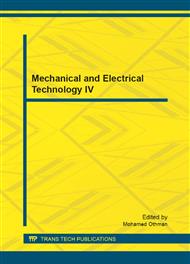p.2463
p.2467
p.2470
p.2474
p.2478
p.2481
p.2485
p.2489
p.2493
Numerical Predictions and Verifications for Hydrodynamic Performance of Bidirectional Tidal Stream Turbine
Abstract:
In this paper, the tidal stream turbine blade is designed by using blade element momentum (BEM) theory. The bidirectional airfoil is created derived from NACA airfoil. Ansys-CFX is used to predict the hydrodynamic performance of this bidirectional airfoil, and it turns out that the bidirectional airfoil works well at both of the tidal current directions. A test turbine named rotor 2 is used, and a comparison is made between experimental results of the test turbine and numerical prediction results to prove the correctness of the numerical method. The power coefficient of bidirectional tidal stream turbine obtained by CFD method is 39.36% at the design tip speed ratio.
Info:
Periodical:
Pages:
2478-2480
Citation:
Online since:
November 2012
Authors:
Keywords:
Price:
Сopyright:
© 2012 Trans Tech Publications Ltd. All Rights Reserved
Share:
Citation:


